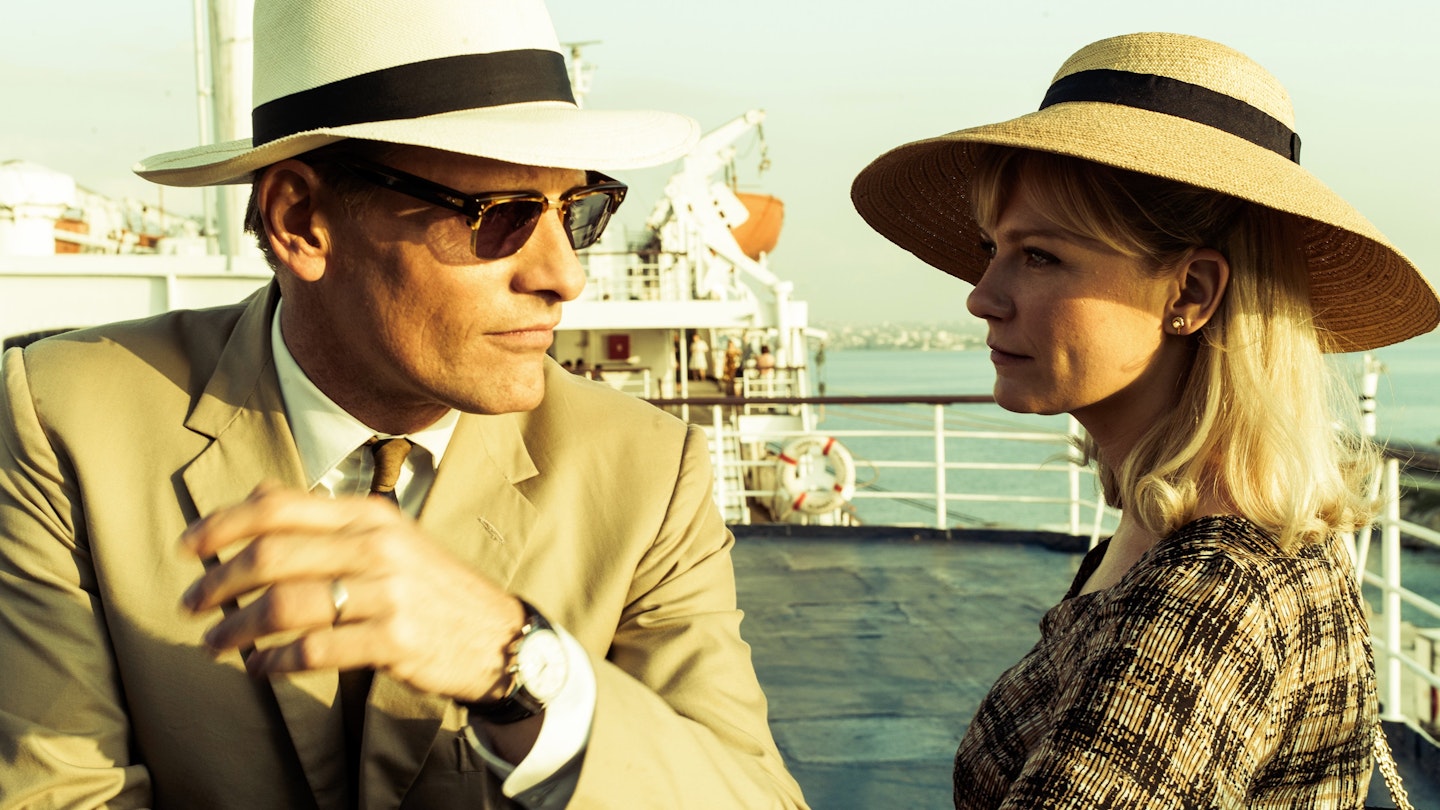Recovering from the psychological rigours of Vertigo, Alfred Hitchcock was intent on making entertainment. As he had tried, unsuccessfully, to secure the rights to Graham Greene's Our Man In Havana, his mind was evidently on a movie about a non-existent character — the personification, in fact, of the Macguffin, which links North By Northwest to its neighbours in the Hitchcock cannon, Vertigo (1958) and Psycho (1960).
Although the screenplay was based on an original story, it's easy to see the influence of Sapper's Bulldog Drummond adventure The Final Count (1926) and John Macnab (1925), which was written by John Buchan, whose The 39 Steps indirectly provided the "pursued innocent" premise. Writer Ernest Lehman called it, "The Hitchcock picture to end all Hitchcock pictures", although the director himself labelled it, "A fantasy of the absurd". Either way, it was a project with which Hitch was very much at ease — he even took time off in mid-shoot to direct two episodes (Poison and Banquo's Ghost) for his TV series, Alfred Hitchcock Presents. Mistaken for a spy and then forced to extricate himself from an international conspiracy, Roger Thornhill is the most resourceful of all Hitchcock's Everyman heroes. James Stewart was under the impression he'd landed the assignment. But just as John Ford was careful to shuffle John Wayne and Henry Fonda between "action" and "conscience" roles, so Hitchcock alternated Stewart and Cary Grant. In the event, it's hard to see anyone else capturing Thornhill's glib heroism with such effortlessly suave precision.
Thornhill is an egotistical chauvinist, totally in control of his (admittedly superficial) world (and is, thus, a potent symbol for America at the height of the Cold War). He's such a hollow man that he even admits his middle initial, "O", stands for nothing. Yet, though he ends up having to clear his name, uncover a conspiracy and save his lady love, his heroism lies in the fact that he survives everything his adversary, Phillip Vandamm (James Mason), can throw at him. In other words, he's something of an accidental hero. But once he knows what his objectives are, he snaps back into the cocky, committed and highly effective man of action he appears as in the opening sequence.
He's also a man who comes to know himself through his experiences. Initially, he's a self-centred, carefree bachelor. Yet, as he waits in the vast emptiness of the prairie for a mysterious stranger who will never come, he realises the sum worth of his status and wealth — a speck on a landscape that can be swatted from above at any moment. One of the most memorable set-pieces in cinema history, the cornfield sequence is almost seven minutes of non-stop action, with the only sound being that of the plane's engine. It's also one of the most Heath Robinson-esque murder attempts ever filmed. Forget the contraptions contrived by Bond villains. This is an assassination bid made in the middle of nowhere by the unseen pilot of a crop-duster plane. It's an act of almost surreal folly on Vandamm's behalf, which is reinforced by the Godot-like non-appearance of Thornhill's contact.
It's ironic that Vandamm is a much more refined and cultured man than Thornhill, with an appreciation of art and a knack for simple kindness that earns him the devotion of his covertly homosexual henchman, Leonard (Martin Landau) and the respect of his double-agent mistress, Eve Kendall (Eva Marie Saint). But his greatest failing is that he's a man unswervingly dedicated to chaos and treachery. Thornhill may be an alienated urbanite, but from the moment he leaves New York and returns to the soil (literally, as he hits the deck at the crossroads), he begins to rediscover his soul, ending his pilgrimage at that shrine to the natural American order, Mount Rushmore.
Compare this to the protagonist in Saboteur (1942) (to which North By Northwest bears many similarities), in which the hero winds up on the head of the Statue of Liberty. Even Saul Bass' credits reflect this journey of self-rediscovery. With so much of the focus falling on Thornhill, it's easy to overlook the less obvious heroism exhibited by Eve Kendall. Suppressing her true identity beneath the ice maiden exterior, she effectively has a dual personality, which not only recalls Kim Novak's character in Vertigo, but also Ingrid Bergman's in Notorious, in which Cary Grant also had to rescue his paramour from the clutches of a man to whom she'd given her body in the cause of national security.
